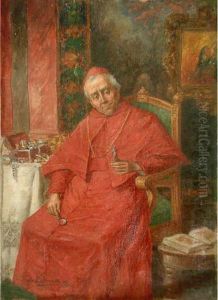De Lacroix Paintings
Ferdinand Victor Eugène Delacroix was a French Romantic artist, born on April 26, 1798, in Charenton-Saint-Maurice, now a suburb of Paris, France. He is widely regarded as the leader of the French Romantic school, although he did not completely subscribe to the movement's dramatic and emotive aesthetics. Delacroix's art is characterized by a brilliant use of color and a boldness of execution that would have a significant impact on the Impressionist and Post-Impressionist movements.
Delacroix received his artistic training from Pierre-Narcisse Guérin in Paris, where he was influenced by the works of the Old Masters at the Louvre, as well as by contemporary artists such as Théodore Géricault. His first major painting, 'The Barque of Dante' (1822), was accepted by the Paris Salon and marked the beginning of his public career. He soon gained recognition with works such as 'The Massacre at Chios' (1824) and 'Death of Sardanapalus' (1827), which showcased his dramatic and expressive style.
Throughout his career, Delacroix was fascinated with the exotic and often depicted scenes from history and literature, as seen in his famous work 'Liberty Leading the People' (1830), inspired by the July Revolution in France. This painting remains one of his most iconic works and is emblematic of the spirit of Romanticism. Delacroix's travels to North Africa in 1832 further enriched his palette and influenced his approach to light and color, as seen in 'Women of Algiers in their Apartment' (1834).
Apart from his paintings, Delacroix was also an accomplished lithographer and muralist. He received various public commissions, including murals for the Palais Bourbon, the Palais du Luxembourg, and the Church of Saint-Sulpice in Paris. His journals, which were published posthumously, offer profound insights into his art, as well as his thoughts on literature and music.
Delacroix's influence extended beyond his lifetime. His emphasis on color and technique had a direct impact on the work of the Impressionists, while his expressive brushstrokes and study of optical effects paved the way for modern artists like Paul Cézanne and Vincent Van Gogh. Delacroix continued to paint until his death on August 13, 1863, in Paris. His legacy is preserved in some of the world's greatest museums, including the Louvre, the Metropolitan Museum of Art, and the National Gallery in London.
